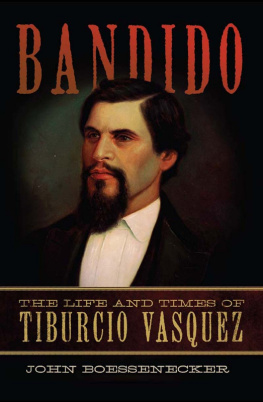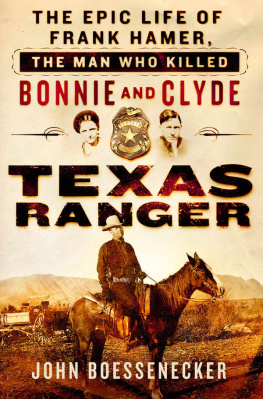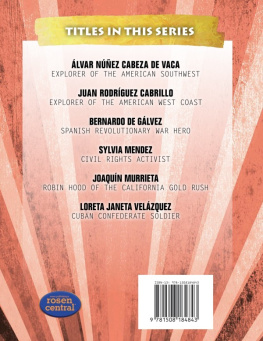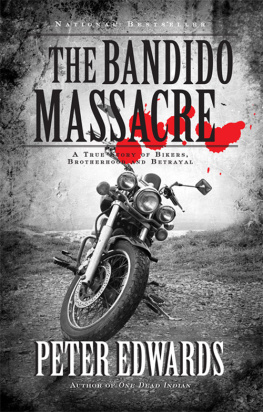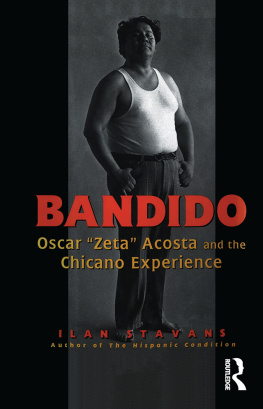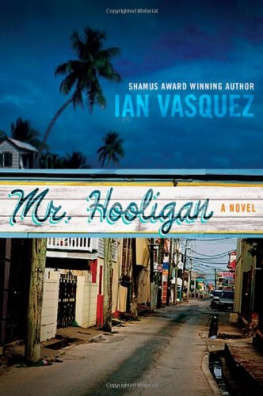
Bandido
The Life and Times of Tiburcio Vasquez
John Boessenecker
University of Oklahoma Press: Norman

2800 Venture Drive
Norman, Oklahoma 73069
www.oupress.com
Copyright 2011 by the University of Oklahoma Press.
All rights reserved. No part of this publication may be reproduced, stored in a retrieval system, or transmitted, in any form or by any means, electronic, mechanical, photocopying, recording, or otherwiseexcept as permitted under Section 107 or 108 of the United States Copyright Actwithout the prior permission of the University of Oklahoma Press.
For information about permission to reproduce selections from this book, write to Permissions, University of Oklahoma Press, 2800 Venture Drive, Norman, Oklahoma 73069 or email
Library of Congress Cataloging-in-Publication Data
Boessenecker, John, 1953
Bandido : the life and times of Tiburcio Vasquez / John Boessenecker.
p. cm.
Includes bibliographical references and index.
ISBN 978-0-8061-4127-5 (hardcover : alk. paper)
ISBN 978-0-8061-8317-6 (eBook-mobipocket)
ISBN 978-0-8061-8318-3 (eBook-epub)
1. Vasquez, Tiburcio, 18351875. 2. OutlawsCaliforniaBiography. 3. California
Biography. I. Title.
HV6452.C3V3 2010
364.1092dc22
[B]
2009050434
This eBook was converted from the original source file by a third-party vendor. Readers who notice any formatting, textual, or readability issues are encouraged to contact the publisher at .
For Bill Secrest and the late J. E. Jack Reynolds
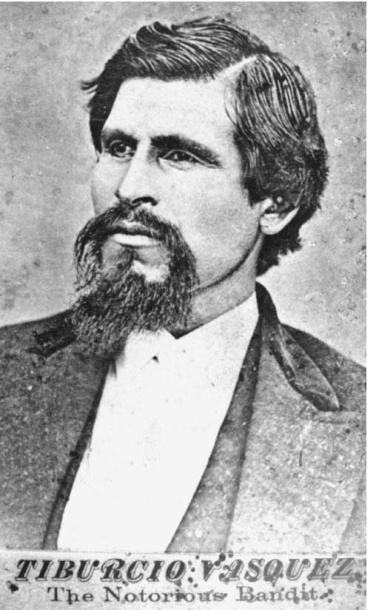
Tiburcio Vasquez, May 18, 1874. (Authors collection)
Bandidos such as Tiburcio Vasquez... functioned like Mexican Robin Hoods.
National Park Service, Civil Rights in America, 2004
Everybody thinks Vasquez was a kind of a hero, when really he was just a thief.
John Steinbeck, The Pastures of Heaven, 1932
Illustrations
Preface and Acknowledgments
Once, California was for Californios. A distant and pastoral province of Mexico, it was an isolated, sparsely settled frontier. Then came the gold rush of 1849. Americans and Europeans flooded in, and almost overnight the Californios, Californias Spanish-speaking people, became a tiny minority, strangers in their own land. Today Latin Americans have reclaimed their place in the state. Fully one-third of Californias population is Hispanic. Los Angeles is the second largest Mexican city on earth. Hispanic immigration, both legal and illegal, is a compelling national issue. The economic, political, and cultural power and influence of Hispanics increase every day. Tiburcio Vasquez could not have foreseen this change, but he would have liked it.
Tiburcio Vasquez (Tee-BOOR-see-oh BAS-kes) is, next to Joaqun Murrieta, Americas most famous Hispanic bandit. At the end of his life, the Chicago Tribune called him the most noted desperado of modern times. The judgment of the New York Times was harsher: With the single exception of Joaquin Murrieta... Vasquez is the most thoroughly hardened ruffian that ever terrified a community in the state.
Why write a biography of such an outlaw? Although famous to western history buffs and to generations of Hispanics, who revere him as a Robin Hoodlike folk hero, he is unknown to the majority of Americans. In fact, he is often confused with Murrieta, the gold rush bandit who was slain by the California Rangers in 1853. violence, and retribution in the Old West, fraught with shootouts, robberies, lynchings, prison breaks, love affairs, manhunts, and betrayals. Of more substance, his life also illustrates important issues of racism and social injustice on the frontier, the lost history of Mexican Americans, their culture, their role in the West, and their legacy. His story raises many questions. Why did he become a bandido? Was he driven to it? Or was he an opportunist who seized on racial strife to justify his crimes? Why did so many Hispanics protect and harbor him and his band? Why have so many in subsequent generations, especially among Hispanics, revered him as a romantic hero, an enduring symbol of resistance to oppression? Why did so many Anglos revile him as a heartless robber and killer? And does his story reveal larger truths about racism and social injustice? By examining his life and times, perhaps we can find answers.
The story of Tiburcio Vasquez is shrouded in mystery and myth. After he was captured near Los Angeles in 1874, newspaper editor Ben C. Truman published a little pamphlet, The Life, Adventures, and Capture of Tiburcio Vasquez, a compilation of news articles that had been published in the Los Angeles press. A year later, two more brief paperbacks appeared, also written by newspapermen: Eugene Sawyers The Life and Career of Tiburcio Vasquez, the California Bandit and Murderer, and George Beerss more ambitious Vasquez; or, the Hunted Bandits of the San Joaquin. Almost everything that has subsequently appeared in print about Vasquez was based on one or all of these sources. None is remotely complete, as all deal mainly with the final years of his life, and contain myriad errors and omissions. During the past century, hundreds of magazine articles, newspaper stories, and book passages have been devoted to Vasquez, repeating the mistakes multifold. No full-length biography telling Tiburcio Vasquezs true and complete story has ever been written. That is a significant oversight I seek to address.
For forty-one years I have collected material on Vasquez, first researching and writing about him when I was a young student, and later delving into court records, newspaper archives, and private recollections. A great deal of information in this biography has never been published before. Outlaws are by nature shadowy and secretive; they dont leave diaries, correspondence, or detailed records of their lives. Researching them is exceedingly difficult. I could never have completed this work without the generous assistance of many people. First to come to my aid were J. E. Jack Reynolds and William B. Secrest. Jack Reynolds, a well-respected California bookseller, began researching Vasquez in 1946, intending to write a biography. He conducted research until the 1960s, amassing a voluminous collection of data. His Vasquez book never came to fruition, however, and in 1989 he and I agreed to collaborate on the bandits biography after I completed several other writing projects. When Jack passed away in 1993, before we could begin work, his widow, Rosalie, kindly gave me his files and research notes. My old compadre Bill Secrest, Fresno historian and author, began his own research on Tiburcio Vasquez in the 1950s, and authored a number of magazine articles and book chapters about the bandit and members of his gang. Bill unselfishly shared with me his extensive research, lent me rare photographs, prepared the maps found herein, helped me track down countless historical items, and faithfully answered my never-ending calls and e-mails for help. It is fitting that I dedicate this book to Bill Secrest and Jack Reynolds.
Information about Tiburcio Vasquezs early years is especially sparse, and I could not have reconstructed that period of his life without the invaluable assistance of my friend Dennis Copeland, historian and director of the California History Room and Archives at the Monterey Public Library. Denniss detective work uncovered many hitherto unknown facts about Tiburcios boyhood, his family, and his friends. Denniss fine research skills have greatly enriched this book, and I am deeply indebted to him for his generous help and fellowship. Another good friend, Deborah Melendy Norman, descendant of a pioneer mountain family of San Benito County, provided invaluable help. An astute researcher and genealogist, Debbie located all manner of data about Tiburcios family, friends, and associates, as well as providing much background information about the mountain region and its people, on whom Vasquez relied for support during the 1860s and 1870s.
Next page
